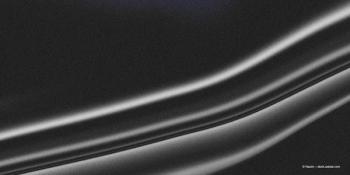
Anti-VEGF injections and glaucoma: Surgeons must watch IOP elevation
Acute rises in IOP that occur with anti-VEGF injections is a real phenomenon, but it is transient and may not necessarily warrant any intervention for many patients, according to Matthew Schlenker MD, MSc.
Anti-VEGF injections may be associated with acute IOP spikes and chronic IOP rise in patients, and these increases in IOP need to be acknowledged and managed, according to Matthew Schlenker MD, MSc.
Dr. Schlenker is an assistant professor and University of Toronto, glaucoma, cataract, and anterior segment surgeon, Trillium Health Partners, Kensington Eye Institute, and Toronto Western Hospital, Toronto, Canada.
Speaking at the annual Sally Letson Symposium, Dr. Schlenker discussed whether anti-VEGF injections are treating or causing glaucoma, Dr. Schlenker described instances where VEGF inhibitors have a role and where IOP elevations may be a concern that need to be addressed.
“When you see neovascularization of the iris, these eyes need anti-VEGF (injections) as soon as possible,” said Dr. Schlenker. “This is an opportunity to prevent peripheral anterior synechiae (PAS), and we all know the outcomes are guarded once we have 360° of PAS.”
With respect to wound modulation in filtering surgery, it is complicated to decide whether to use subconjunctival anti-VEGF injections, according to Dr. Schlenker.
“There are plausible mechanisms of action,” he said. “There are some in vitro studies that are promising, and there have been animal studies that are promising. However, the clinical studies have yielded mixed results.”
Tackling IOP spikes
Acute rises in IOP that occur with anti-VEGF injections is a real phenomenon, but it is transient and may not necessarily warrant any intervention for many patients, Dr. Schlenker noted.
“This rise (in IOP) does not last very long for the average patient,” Dr. Schlenker said. “For patients with healthy optic nerves, it may be reasonable to do nothing. However, they should be educated that it is happening.”
If a physician opts to treat this elevation in IOP, they can consider various modalities to manage the IOP rise.
One study has shown the most effective medical treatment to blunt fluctuations is apraclonidine, the same medication used to blunt IOP spikes post-glaucoma laser treatments.
A physician also can try to allow for subconjunctival reflux, said Dr. Schlenker.
“In the past, the main medication injected intravitreally was triamcinolone, and a 27-gauge needle was used which likely allowed for more reflux,” he said. “Studies show that if you allow for (subconjunctival) reflux when you do your anti VEGF-injection, there is a much lower risk of having a spike (in IOP).”
Still another intervention that can be in the armamentarium to manage acute rises in IOP resulting from injections of anti-VEGF agents is anterior chamber paracentesis, he noted, though the long-term effects of repeat paracenteses is unknown.
Chronic IOP spikes
Chronic rises in IOP can occur as a result of numerous mechanisms, such as silicone microdroplets from syringes associated with anti-VEGF injections, protein aggregates of the anti-VEGF therapies themselves, particularly if they have been stored for some time, direct toxic effects on the trabecular meshwork, inflammation, and a decrease in nitrous oxide production.
“It is thought that there are certain people at risk for chronic IOP rises, such as people who already have ocular hypertension,” he said, noting such patients have their outflow facility impaired after anti-VEGF injections.
Landmark trials
The clinical trials MARINA (Minimally Classic/Occult Trial of the Anti-VEGF Antibody Ranibizumab in the Treatment of Neovascular AMD) and ANCHOR (Anti-VEGF Antibody for the Treatment of Predominantly Classic Choroidal Neovascularization in AMD) showed the benefit of injections of VEGF inhibitors and also measured safety of IOP levels, said Dr. Schlenker.
These trials originally reported mean IOPs but did not look specifically at the number of patients with a clinically significant IOP rise over time. In post-hoc analysis, there was a statistically significant difference in patients who had a chronic IOP rise between those receiving injections and those receiving sham injections.
IOP rise can also be a concern in patients with diabetic macular edema receiving injections of VEGF inhibitors.
Dr. Schlenker noted data from a trial that compared ranibizumab and laser versus laser alone, where the investigators concluded repeated intravitreous injections of ranibizumab may increase the risk of sustained IOP elevation, suggesting a possible need for ocular hypotensive therapy. JAMA Ophthalmol. 2015 May;133(5):589-97.
The investigators concluded that the data indicate IOP be monitored periodically in eyes receiving repeated injections of anti-VEGF therapy, said Dr. Schlenker. “There was not a large number of patients with a problem in these studies; however, these studies mainly included patients who did not have a glaucoma, so may not be generalizable to other patient populations,” he said.
POAG increase
There has been talk anecdotally of a spate of cases of primary open-angle glaucoma (POAG) requiring surgery in patients who had undergone anti-VEGF injections in British Columbia (BC), noted Dr. Schlenker.
“We have learned that there are some differences in the preparation (of the anti-VEGF injections) compared to Ontario,” he said.
Dr. Schlenker noted the differences in preparation are of unknown significance.
“We do not really know the answers,” he concluded. “It is something where big data can hopefully elucidate what is going on.”
Disclosures:
Matthew Schlenker, MD, MSc, FRCPC
p: +1 905-456-3937
This article was adapted from Dr. Schlenker’s presentation at the 51st Sally Letson Symposium in Ottawa, Ontario, Canada. Dr. Schlenker has no financial disclosures related to this content.
Newsletter
Keep your retina practice on the forefront—subscribe for expert analysis and emerging trends in retinal disease management.












































